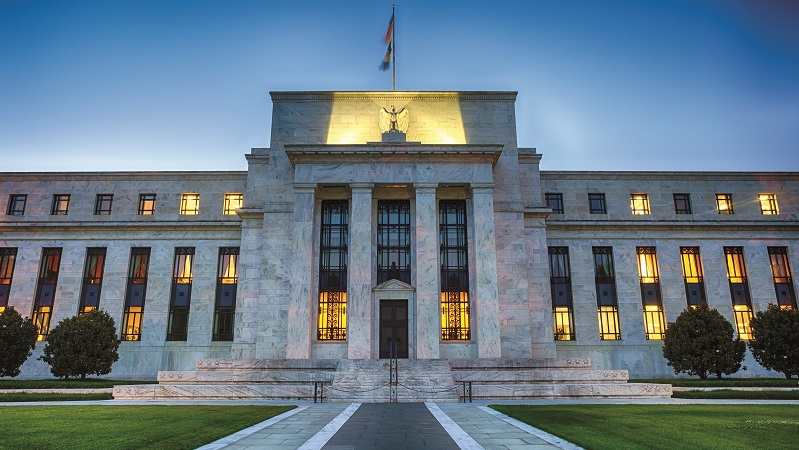The Federal Reserve’s Federal Open Market Committee (FOMC) will announce its latest decision on US interest rates at 6pm this Wednesday, with market watchers broadly certain of seeing a rise of 75 basis points (bps).
The Federal funds rate, which currently stands at 3%-3.25%, has seen three consecutive 75 bps hikes at the last three FOMC meetings in June, July and September.
BNY Mellon IM’s head of US macro, Sonia Meskin, said: “The FOMC is widely expected to raise its target rate by another 75bps [on Wednesday], and this is also our forecast. While another 75bps for November is ‘baked in’, the real question for investors is the trajectory of policy going forward, as well as the terminal rate.
“We believe there is a 50% chance the Fed will hike by another 75bps in December, and a 50% chance it will hike by 50bps in December. Either way, both the committee’s and our forecasts suggest the policy rate will stabilise between 4.5% and 5.0% early in 2023, though persistently high inflation is a notable upside risk to this forecast.
“Our central expectation is that the US policy would need to tighten from here, even in the face of a global recession, in order for the Fed to get inflation down to its 2% objective. As we move closer to year-end, however, we may see encouraging signs of labour-market cooling – even if this means we are entering a recession.”
All eyes on 2023
While industry commentators are all but certain of a 75bps hike, many will be looking for signs of what is to come in 2023 at Fed chair Jerome Powell’s press conference, which will follow the FOMC meeting.
Pimco economists Tiffany Wilding and Allison Boxer said: “All focus will be on the press conference after Fed officials started to send trial balloons about slowing the pace of rate hikes in the coming meetings. We expect chair Powell to signal the committee’s intent to slow the pace of rate hikes at some point relatively soon, before holding rates at a high level in 2023, while also saying policy is not on a pre-set course.
“The Fed faces a tough balancing act on communication in the coming months, as it tries to balance slowing the pace of hikes without easing financial conditions too much and, as a result, Powell’s comments could sound hawkish relative to market participants looking – hoping – for a sharper Fed pivot. Since inflation is likely to remain elevated ahead of this eventual pause period, this will represent a step back from the data-dependent Fed market participants have gotten used to in recent months.”
For his part, Thomas Costerg, senior US economist at Pictet Wealth Management, said: “It would be wishful thinking to believe Powell may signal that tightening is coming to an end soon. The Fed’s priority is inflation fighting, and recent data is just not good enough. One may regret the Fed is very backward-looking, as 2023 economic prospects are getting increasingly sombre. The risk of policy mistake – in other words, the risk of over-tightening – is therefore rising, especially in an environment of high debt, and shrinking market liquidity. The window for the Fed’s central scenario of a ‘soft landing’ is becoming narrower and narrower.”
See also: Bond market expectations at odds with Federal Reserve plans










